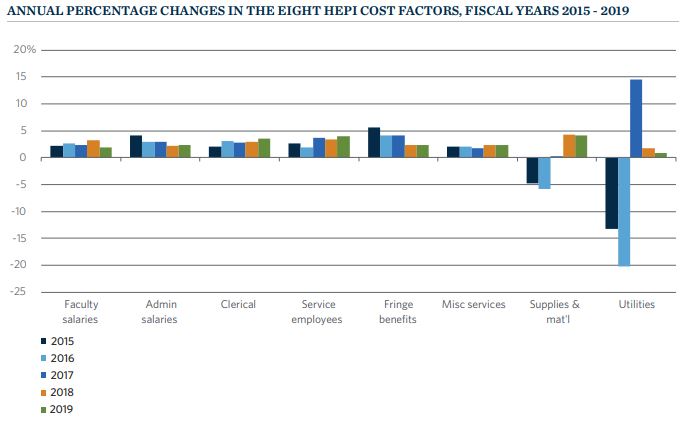Higher Ed Inflation Lands at 2.5 Percent for 2019
Author: Rick Seltzer
Go to Source
Colleges and universities in the United States experienced cost increases of 2.5 percent in the fiscal year that ended in June 2019, according to the Higher Education Price Index, a long-running measure of higher education inflation.
The 2019 inflation figure is down slightly from 2.9 percent in 2018 and 3.4 percent in 2017. It is nearly identical to the index’s five-year average, which is 2.4 percent.
Commonfund Institute, a branch of the investment manager Commonfund, released the latest Higher Education Price Index data Monday. The index, also called HEPI, is intended to be a more accurate way to measure cost changes felt by colleges and universities than are indices aimed at other economic segments, like the Consumer Price Index. HEPI, which dates back to 1961, is mostly used to project budget increases colleges and universities will need in order to preserve their purchasing power.
HEPI is made up of eight weighted components. Faculty salaries receive the most weight, making up 35 percent of the index, followed by clerical costs at 18 percent, fringe benefits at 13 percent and administrative salaries at 11 percent.
Faculty salaries climbed 2 percent in 2019. Clerical costs jumped 3.5 percent. Fringe benefits rose by 2.4 percent, and administrative salaries increased by 2.4 percent.
Among the four lower-weighted components, service employee costs increased by 4 percent in 2019, utilities ticked up by 0.9 percent, supplies and materials jumped 4.1 percent, and miscellaneous services rose 2.4 percent.
Of the eight factors, five were above their five-year averages. Three came in below their five-year averages.

